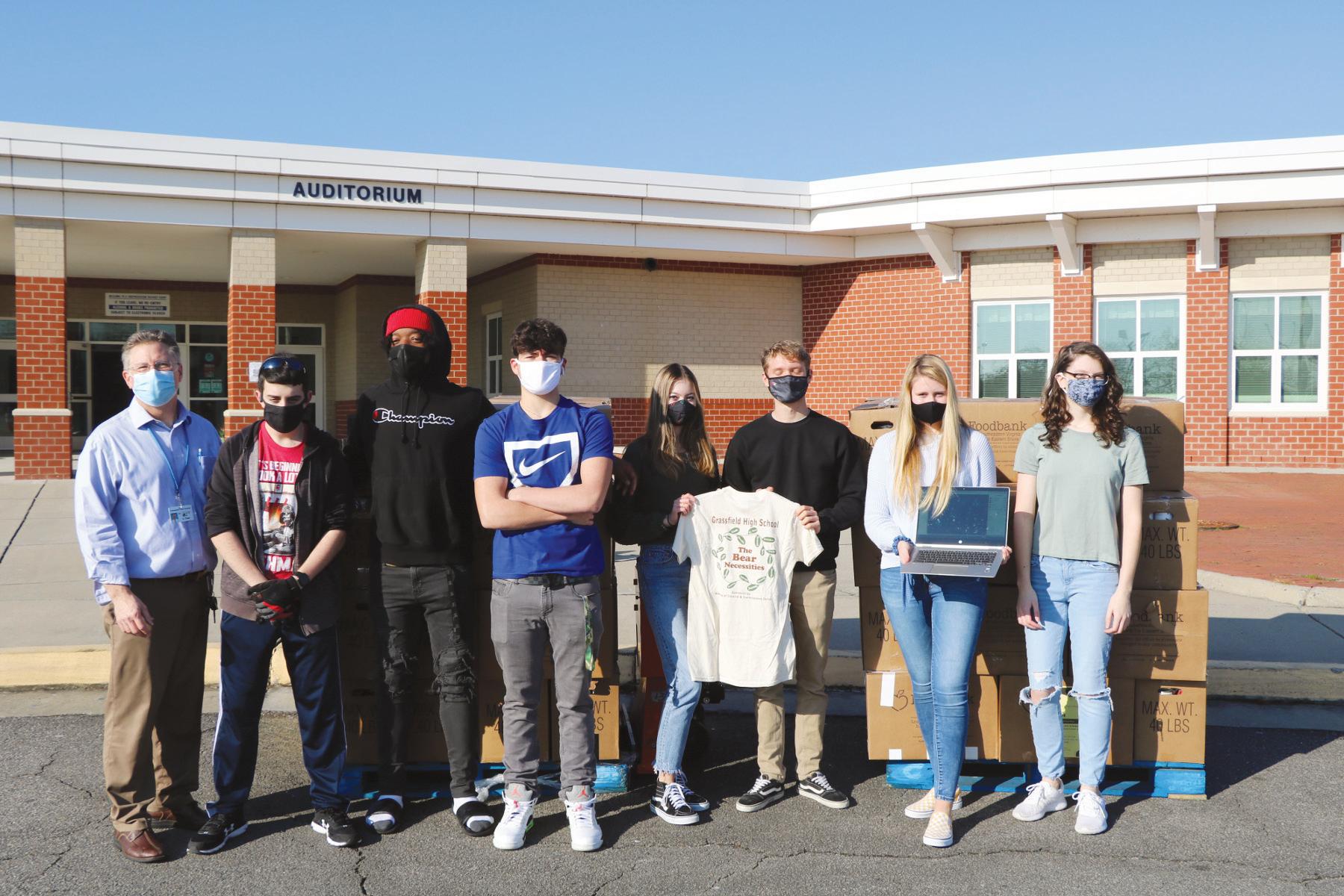21
Austin South Asian | May 2021
New Ways Families With Kids Can Go Green
Having kids can mean having a lot of stuff, not all of which is made from eco-friendly materials. However, if you’re like many parents, you want your children to have a clean, healthy planet to live in when they grow up. Going green while parenting might sound challenging, but it’s definitely not impossible. These tips and insights can help get you started:
tic, instead buy favorite items in bulk and wrap smaller portions in reusable, compostable wrapping. Eco-Friendly Play Some of your children’s favorite
which is committed to sustainability and has plans to replace its fossil-based blister packaging with plant-based alternatives in 99% of its electronic learning products by 2025. Additionally, the brand is launching a variety of green elec-
Its LeapFrog line will include the Choppin’ Fun Learning Pot with food pieces made of 85% plantbased plastic while two new wooden toys, Touch & Learn Nature ABC Board and Interactive Wooden Animal Puzzle, will include wood from responsibly-managed forests certified by Forest Stewardship Council.
Reusable Food Packaging With a little creativity, you can ditch the plastic utensils, baggies and single-use beverage containers at lunchtime. To substantially reduce your family’s plastic waste, switch to organic, reusable lunchboxes featuring partitions and tightly-fitting, leak-proof lids. Keep kids hydrated with easy-toclean stainless steel water bottles or thermoses. Finally, rethink the types of products you buy most often. Rather than opting for snacks pre-packed in single-serving plas-
New eco-friendly toy options from VTech include the Sort & Recycle Ride-on Truck, which not only highlights the importance of protecting the environment through play, but is made of 90% reclaimed plastic, as well as three new vehicles in the popular Go! Go! Smart Wheels line, all made of 85% plant-based plastic.
toy brands are already going green, making it easy to make playtime eco-friendly. One example of a leader in the industry is electronic learning toy company VTech,
tronic learning products later this year as part of its commitment to replace fossil-based plastics with sustainable alternatives by 2030.
The brand’s partnership with TerraCycle also provides an easy way for consumers to recycle its electronic learning products. To learn more about VTech’s sustainability efforts, visit vtechcares.com.
Composting Composting is a simple way to reduce waste and teach children about how they can positively impact the environment. Start by setting up a compost bin and work with your children to identify ingredients that can be added to it. A good compost recipe includes materials such as dry leaves, household waste like vegetable scraps, coffee grounds and eggshells, and a layer of soil. Add some water and watch as science comes to life. Kids will love seeing their compost turn to soil over time and allowing them to be hands on throughout the process teaches them the concept of recycling in a realistic and relatable way. With a few simple tweaks, parents can make choices that better protect the environment, while setting a great example for kids. (StatePoint)
5 Important Facts About The Lung Disease, Silicosis Silicosis, a type of lung disease caused by breathing in tiny bits of silica, mainly affects workers in jobs such as construction and mining. Over time, exposure to sil-
about the disease: 1. Silicosis is the world’s oldest known occupational disease. Approximately 2.3 million U.S.
the most abundant mineral in the Earth’s crust. 2. Silicosis normally takes 10–30 years after first exposure to develop. Microscopic silica particles can penetrate deep into a person’s lungs and greatly affect their ability to breathe. Symptoms typically worsen over time, especially if exposure to silica dust is ongoing. Over time, the particles can cause lung inflammation that leads to the formation of lung nodules and scarring called pulmonary fibrosis.
ica particles causes scarring in the lungs, which can harm your ability to breathe. In an effort to help people prevent, diagnose and treat silicosis, the American Lung Association is sharing these five important facts
workers are exposed to silica in the workplace, including 2 million in construction and other industries, like stone countertop fabrication, foundry work, masonry, mining, general construction and other jobs that involve drilling or breaking materials that contain silica,
Individuals with silicosis have a higher risk of developing other health issues like tuberculosis, bronchitis and lung cancer. 3. There are three types of silicosis. Acute silicosis causes cough, weight loss and fatigue within a few weeks or years of exposure to inhaled silica. Chronic silicosis, which is the most
common form of silicosis and appears 10 to 30 years after exposure, can affect upper lungs and sometimes cause extensive scarring. Lastly, accelerated silicosis occurs within 10 years of high-level exposure. 4. There is no cure for silicosis, making prevention essential. While there is no cure for silicosis, the good news is that this lung disease is completely preventable. Construction sites can mitigate dust by using tools with integrated vacuum systems or by wetting down materials, using sweeping powder, and using dust and water controls appropriately. In addition, properly-fitted respirators can protect lung health while on the job. 5. Appropriate diagnosis and treat-
ment will make life with silicosis easier. The lung damage caused by silicosis is permanent, however it is imperative to treat the disease to slow down progression and relieve symptoms. Once silicosis has developed, your doctor will assess the degree of lung damage with tests. Some people may benefit from inhalers or supplemental oxygen to treat symptoms. Using the proper medications and seeing an experienced specialist are important to managing the disease, as well as quitting smoking, getting adequate exercise, managing your weight and monitoring for complications. For resources and to learn more, visit www.lung.org. (StatePoint)
To Advertise In ASA 512-828-6709











